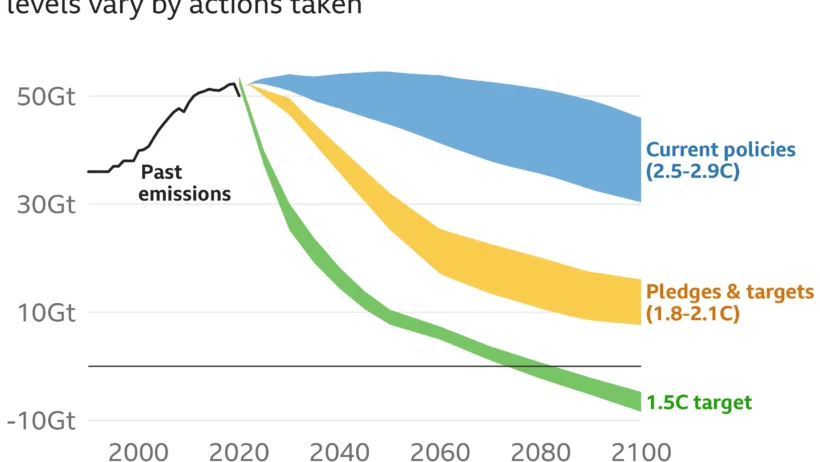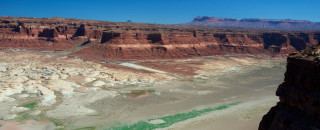Every day, millions of individuals climb into their vehicles, embarking on seemingly mundane journeys. Whether it’s the predictable commute to work, a drive to the grocery store, or a weekend road trip, these daily drives are often taken for granted. However, beneath the surface of these routine travels lies a surprising link to global warming that merits closer examination. Understanding this connection is crucial for grasping the broader implications of individual behaviors on our planet’s climate.
At the crux of the relationship between daily driving and global warming is the practice of burning fossil fuels. Vehicles on the road predominantly rely on gasoline or diesel—both derived from oil. When combusted, these fuels release a cocktail of greenhouse gases, primarily carbon dioxide (CO2) and methane (CH4), into the atmosphere. These gases trap heat, fostering an environment conducive to rising global temperatures. A single gallon of gasoline burned emits approximately 19.6 pounds of CO2. When multiplied by the billions of gallons consumed annually across the globe, the volume of emissions is staggering.
Moreover, the phenomenon extends far beyond just CO2 emissions. Vehicle exhaust also releases nitrogen oxides (NOx), volatile organic compounds (VOCs), and particulate matter. Collectively, these pollutants contribute not only to climate change but also to local and regional air quality degradation. The indisputable reality is that our daily drives generate a significant environmental footprint, intricately linked to broader climate health.
Consider the modern cityscape, which has often been designed with automobility as a cornerstone. Suburban sprawl, characterized by low-density housing and extensive road networks, demands greater vehicle use. This pattern fosters dependence on automobiles, further perpetuating the cycle of greenhouse gas emissions. Ironically, the allure of convenience ties individuals deeper into a system that simultaneously threatens the very ecosystems upon which humanity relies.
But what drives this relentless pursuit of mobility? There’s a psychological underpinning to our relationship with cars. For many, driving is imbued with a sense of freedom, a personal escape from the constraints of daily life. The car serves as a sanctuary, a personal space to reflect, unwind, or even energize for the day ahead. This emotional connection can overshadow rational considerations about the environmental consequences of our driving habits.
The sheer fascination with vehicle culture also evokes deeper societal implications. Cars are often equated with status, autonomy, and identity. Advertisements tout the latest models as symbols of success, which cultivates an insatiable appetite for newer, often less efficient vehicles. As individuals upgrade for aesthetic or status-driven reasons, they inadvertently amplify their carbon footprint. This societal ethos surrounding driving is not merely a personal choice but a collective behavior that hinges upon cultural values and norms.
Nevertheless, the tide is beginning to shift, as awareness regarding global warming heightens. Individuals are increasingly recognizing the importance of sustainable practices in mitigating climate change. Carpooling, public transit, biking, and walking are emerging as viable alternatives to single-occupancy driving. Each shift represents not just a personal choice but a collective movement toward sustainable living. Such actions mitigate the impact of the daily drive, embodying a conscious effort to diminish carbon footprints.
Furthermore, advancements in technology are reshaping the transportation landscape. The advent of electric vehicles (EVs) and hybrid models signifies a crucial evolution in mitigating greenhouse gas emissions associated with traditional combustion engines. In transitioning from fossil fuel-based vehicles to electric counterparts, significant fossil fuel reduction can occur, provided the electricity used is derived from renewable sources. However, this transition necessitates robust infrastructure, public policy support, and a cultural shift toward embracing new technologies.
Nevertheless, it’s vital to recognize the limitations of individual choices. While adopting greener practices is impactful, systemic change is essential for lasting effects. This encompasses comprehensive government policies aimed at reducing emissions, investing in public transport infrastructure, and incentivizing the use of renewable energy. Advocacy for urban planning that prioritizes walkability and bike-friendliness is also paramount. Such measures can disentangle communities from an over-reliance on vehicles and promote a holistic approach to sustainability.
Education plays a pivotal role in fostering this transformation. Understanding the link between daily driving and global warming can catalyze action within communities. Schools, workplaces, and local organizations can cultivate awareness, encouraging discussions about sustainable transport options and inspiring collective initiatives. As individuals become informed about their choices’ effects, a wave of environmental consciousness can emerge, generating ripples of positive change throughout society.
In conclusion, the connection between your daily drive and global warming is an intricate interplay of choices, culture, and technology. Recognizing the environmental impact of routine travels underscores the urgent necessity for personal and collective action. Embracing sustainable practices, lobbying for systemic change, and fostering a culture of environmental responsibility can collectively mitigate the effects of global warming. As more individuals uncover this link, they contribute to a broader movement dedicated to preserving the planet for future generations. Ultimately, by transforming how we navigate our daily lives, we can drive not only our vehicles but also a future toward sustainability and environmental health.








